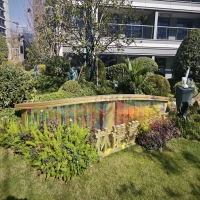Welcome to the website for landscape facilities products and knowledge.
How does the design of the trash can accommodate the needs of public restrooms or sanitation facilities?
The design of trash cans in public restrooms and sanitation facilities plays a critical role in maintaining hygiene, efficiency, and user satisfaction. Unlike household bins, these units must address unique challenges such as high foot traffic, odor control, and contamination risks. Here’s how modern designs accommodate these needs:
1. Hygienic Touchless Operation: Many public restroom trash cans feature sensor-based lids or foot pedals to minimize contact, reducing the spread of germs. This is especially vital in high-traffic areas like airports or shopping malls.
2. Odor and Leak Containment: Advanced liners, sealed lids, and antimicrobial coatings help trap odors and prevent liquid leakage, ensuring a cleaner environment. Some models even integrate deodorizing systems.
3. Durability and Capacity: Heavy-duty materials like stainless steel or reinforced plastic withstand frequent use, while larger capacities reduce the need for constant emptying, easing maintenance workloads.
4. Accessibility and Safety: Designs often include hands-free disposal for wheelchair users and child-safe mechanisms to prevent injuries, aligning with ADA compliance standards.
5. Aesthetic Integration: Sleek, neutral designs blend with restroom decor while discouraging misuse (e.g., improper waste sorting).
By prioritizing these features, modern trash cans enhance sanitation efficiency and user comfort in public spaces. Innovations like solar-powered compactors or smart sensors for fullness alerts are further elevating restroom hygiene standards.
Related search:

Recommendation
Metal and acrylic color-changing combined curtain wall for large-scale public landscape facilities